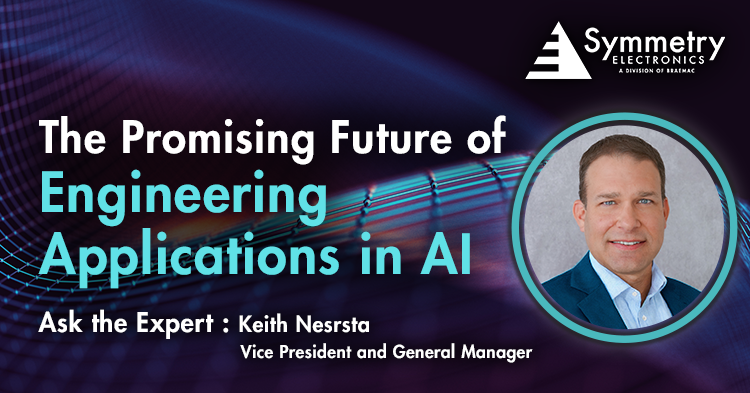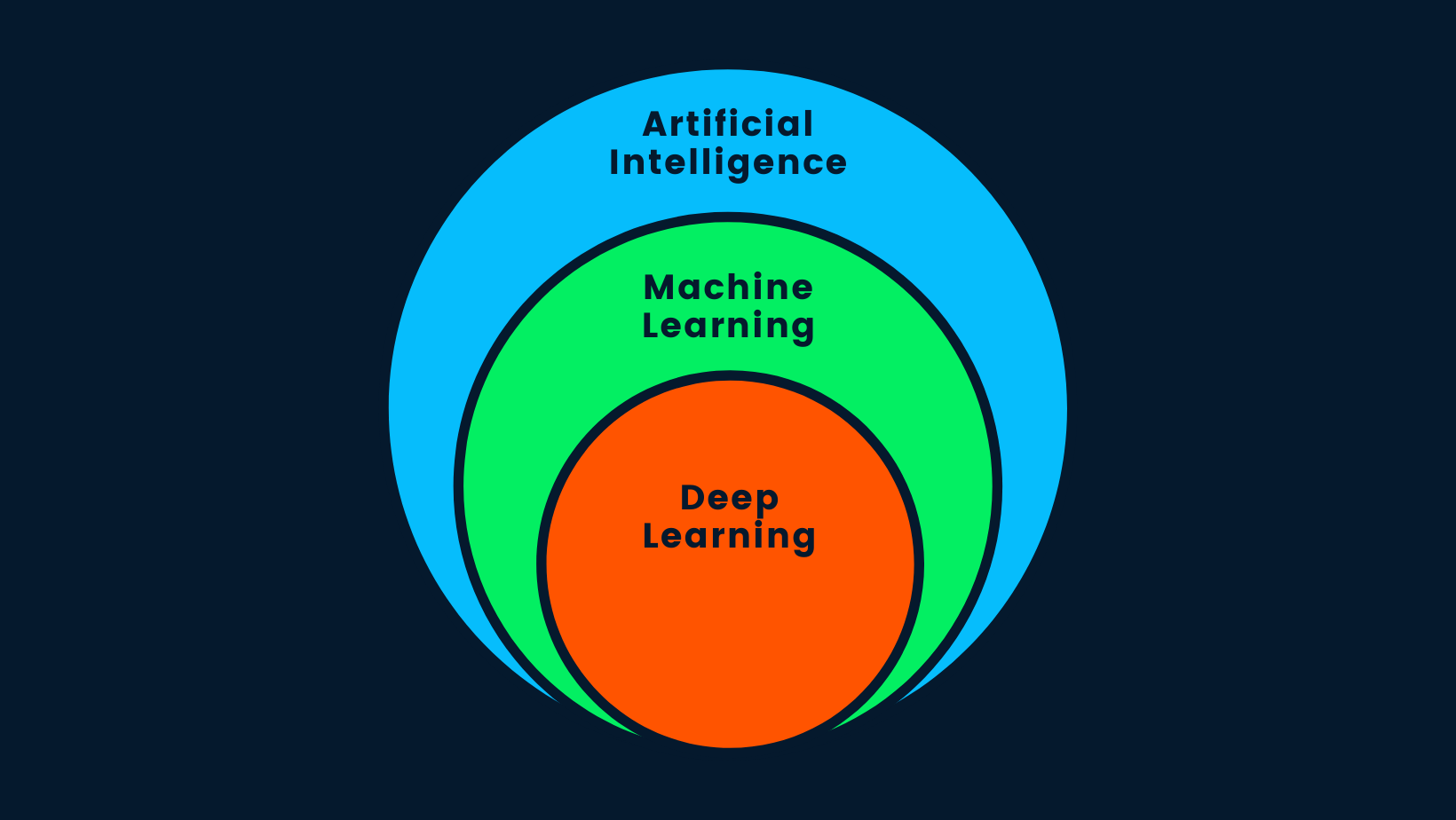- Home
- Symmetry Blog
- What Promising Future Awaits Engineering Applications of Artificial Intelligence?
What Promising Future Awaits Engineering Applications of Artificial Intelligence?
Ask the Expert: Keith Nesrsta
About Keith Nesrsta

In early 2022, a colleague introduced me to OpenAI and the world of generative Artificial Intelligence (AI). For the first time, it felt like we were fully harnessing AI, a tool that is now revolutionizing the engineering world in numerous ways. It is not only transforming applications and solutions across all engineering disciplines but also their design processes.
AI advancements span areas such as intelligent design and simulations, predictive maintenance, autonomous systems, quality control and inspections, and environmental impact assessment. Its reach leads to enhanced safety, efficiency, and sustainability that was previously unattainable. The future of AI in engineering holds exciting possibilities.
The AI Evolution
Today’s technological revolution actually began as early as the 1950s with the development of electronic data storage and leveraging the use of intelligent machines to perform mathematical functions. In the 1970s, movies like Star Wars showcased what scientists and engineers envisioned as possible with advancing technology. AI, essentially computers performing what are considered to be human-like activities, has only accelerated in its development and sophistication over the last half-century. In recent years, we have seen more advancements in AI than those associated with the invention of the Internet.
AI and Big Data
Big Data, a key component to the advancement in AI, emerged from the increasing ability to store vast amounts of data digitally. The most obvious example of AI’s progress is the evolution of Internet search engines since the late 1990s. Companies like Google, Microsoft, and Alibaba have leveraged Big Data to provide content that accurately matches the search keywords. This evolved into a more effective approach–tuning the advertisements on a search page based on the user’s past search history. Now, data comes from multiple sources, offering more efficient results.
.jpg)
Smarter E-Commerce Solutions
The e-commerce market has also significantly benefitted from AI, streamlining recommendations for products with commodity attributes like logistics and sales data. Amazon is a great example. In the electronics industry, companies like Mouser Electronics have also seen advantages. Ultimately, the goal is to increase click-to-purchase ratios. Content creation for news reporting, live streaming, and social media have also benefited from AI advancements.
Machine Learning vs Deep Learning
Engineers continue to harness AI for effective data driven approaches to complex problems. Machine Learning (ML), a branch of AI, equips computer systems to learn and improve from experience without explicit programming, while good old-fashioned AI (GOFAI) relies on explicit rules. ML enables machines to predict outcomes and classify information by analyzing data sets without human intervention.
Examples of real-world problems solved by ML include email spam detection, predictive maintenance, credit scoring, fraud detection, product recommendations, and stock price predictions.
ML has evolved from handcrafted features to data-driven–leading to Neural Networks (NN). NNs specifically focus on mimicking brain-like computations through collections of “nodes” that perform calculations on data they receive (inputs) and, when “activated,” pass on information to other connecting nodes (analogous to the neurons in a human brain). Deep learning, powered by NNs, tackles complex problems with multiple “hidden” layers of nodes between the first layer and the output.

There are many applications leveraging the deep learning of NNs. Most people are familiar with Large Language Models (LLMs) like ChatGPT, which uses OpenAI’s GPT-4. Image recognition is another example, with use cases such as autonomous vehicles, robotics, facial recognition, and image classification.
Engineers are also using sensor technology with image recognition to gain more insight into sensor fusion, which merges data from radar, LiDAR, and multispectral cameras to enable situational awareness that can inform real-time decisions in autonomous vehicles or issue warnings to assist human drivers.
Other examples of deep learning include text processing for chatbots, virtual assistance, machine translation, and text summarization/generation. Voice or speech recognition, traffic management, or medical diagnosis have also taken advantage of this ever-evolving technology.
How AI Techniques Enhance Engineering Design
AI has already impacted modern engineering in various ways, including machine learning, robotics, and revolutionizing manufacturing/production processes. Generative AI is still in its infancy but holds great potential in enhanced decision-making, design optimization, predictive maintenance, materials research and discovery, and energy efficiency and sustainability.
For instance, Siemens used AI to enhance a Formula 1 car design, resulting in a 1.3% reduction in lap time. The University of Waterloo developed an intelligent pavement monitoring system using AI, leading to cost savings and improved safety. By monitoring sensors and historical data, engineers can proactively address issues minimizing downtime and costs in addition to optimizing energy consumption in buildings, transportation, and industrial processes.

Altium, a leader in engineering design tools, is actively integrating AI in PCB design tools, enhancing productivity and enabling more efficient workflows. Altium is exploring the use of generative AI (similar to ChatGPT), for specific tasks such as component selection, code generation, automated testing for embedded systems, and datasheet analysis. Cadence’s Allegro X AI technology is on a similar path. These tools not only provide productivity accelerators for component selection but also assist in the actual placement and routing of PCBs, potentially transforming the industry.
Future Applications of Artificial Intelligence in Engineering
AI is significantly transforming the field of engineering. Its integration into electrical design and simulation is revolutionizing the way engineers work, providing powerful tools for optimizing designs and conducting complex simulations. Deep learning algorithms and NNs are particularly influential, as they can analyze extensive data sets, suggest improvements, and predict potential issues.
AI systems manage complex electrical networks, ensuring optimal performance and energy efficiency while enhancing reliability through predictive maintenance. By analyzing sensor data and maintenance records, AI can predict equipment failures, allowing for proactive maintenance and reducing operational costs.
We are already seeing this transition with the tools available to the engineering community today. In less than 2 years, the design world is going to see more drastic changes in how products are built. Buckle up and stay awake; we are just getting started.
Want to remain at the forefront of innovation? Symmetry Electronics, a Division of Braemac, is committed to keeping you ‘in the know’ about the latest engineering trends and updates. To stay in the loop with other industry experts, subscribe to our newsletter, The Current, today!
